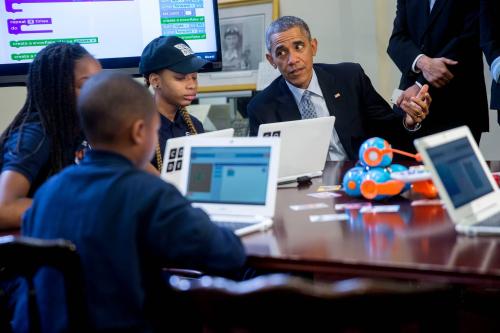This week the annual Consumer Electronic Show had tech reporters scurrying to Las Vegas to see what technology companies had to offer in 2016. From smarter fitness watches and food scanners to table-top brewers, many devices promised to make users’ lives easier and more integrated.
But what device stole the show? According to the Wall Street Journal, driverless cars ran circles around all of the other exhibitors.
Automakers Ford and Toyota announced major investments in driverless cars and pledged to bring models to market for everyday consumers. Following up on its $1 billion investment in driverless development, Toyota announced hiring several experts in efforts to form a “200-person company designed to advance automated driving and other artificial intelligence.” Ford pledged to bring its driverless car fleet to consumers by 2020, offering not just luxury consumers a chance to buy them.
Additionally, chipmaker Nvidia, which make internal components for many computers, unveiled a new computer dubbed Drive PX2 with the processing power “supposedly equivalent to 150 MacBook Pros,” meant to provide the processing power necessary for driverless cars to navigate road obstacles and potential hazards even faster than a human being can.
Federal agencies with an interest in driverless cars also made an appearance at CES 2016. While there, U.S. Secretary of Transportation Anthony Foxx noted that his agency was “a little ways away” from developing national regulations for driverless cars. Currently, most driverless car regulations exist at the state level.
On May 8, 2015 the Center for Technology Innovation and the U.S. State Department hosted a panel discussing how policymakers worldwide need to grapple with huge practical and ethical issues to bring driverless cars to the road. However, the panel agreed that the potential of driverless vehicles offers the possibility of revolutionary impact, especially in realms of public safety and service to the disabled.
In 2014, John Villasenor broke down the liability issues vexing policymakers and suggested that existing regulations offer a great place to start: “The United States has a robust products liability law framework that, while certainly not perfect, will be well equipped to address and adapt to the autonomous vehicle liability questions that arise in the coming years.”
While many still see driverless cars as an innovation in the far-flung future, this year’s CES is a reminder to many that the technologies that will propel this future are arriving today.



Commentary
Driverless technologies emerge at annual Consumer Electronics Show
January 12, 2016